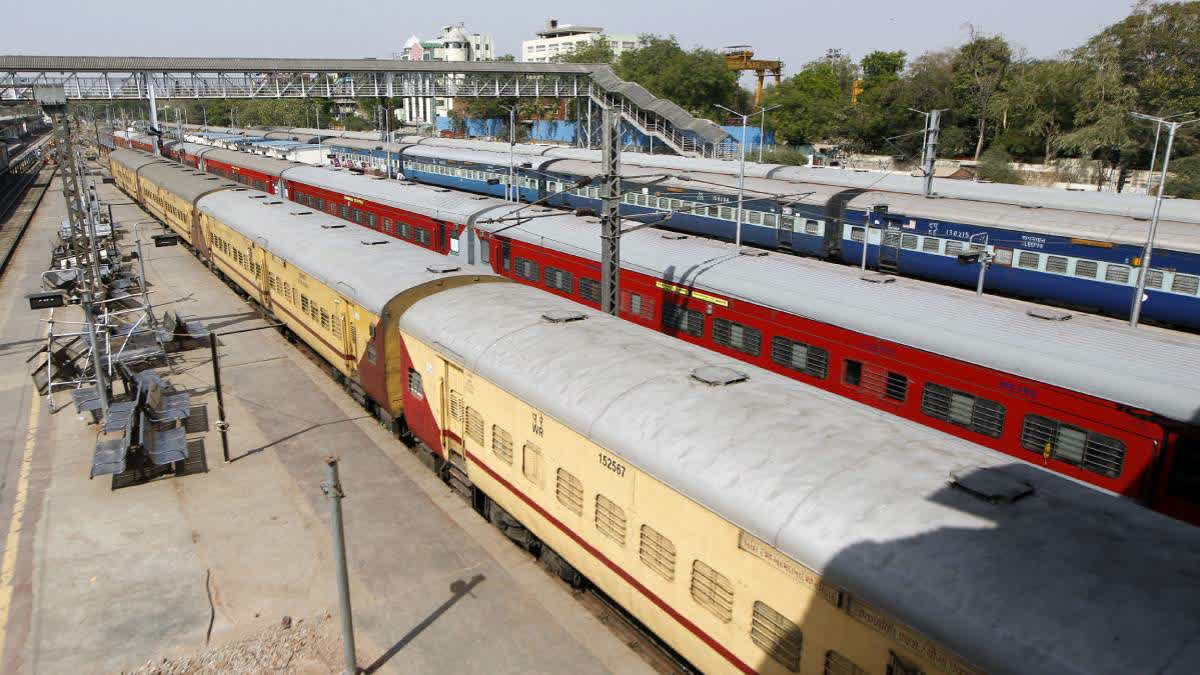New Delhi: The Railway Ministry was asked to modify existing infrastructure at railway stations to comply with laid down standards of accessibility for Persons with Disabilities (PwD) on transportation, information and other facilities provided to the public.
The Court of Chief Commissioner for PwD gave directions to the ministry on a detailed complaint by Dr Satendra Singh, a doctor with a locomotor disability, who highlighted the numerous challenges he faced at New Delhi Railway Station (NDLS) and other key locations.
Singh has also alleged accessibility gaps in the design of Vande Bharat Express in his complaint. The court ordered the Ministry of Railways to retrofit and modify existing infrastructure at NDLS, Ghaziabad Railway Station and other stations to comply with the Harmonised Guidelines and Standards for Universal Accessibility in India, 2021.
The directives include installing elevators, ramps with gentle slopes of 1:12, universally accessible toilets, tactile guidance systems, wheelchair-friendly buggies and dual-height ticket counters.
The court emphasised that elevators must be prioritised over escalators to ensure universal accessibility and to meet the statutory obligations outlined under the Rights of Persons with Disabilities Act, 2016. Singh, in his complaint, detailed the harrowing experience he endured on December 27, 2024, when he arrived at NDLS to board the Vande Bharat Express.
The lack of a lift or ramp at Platform 12 forced him to descend over 80 steps using crutches. A poorly marked lift at Platform 16 offered little help and upon his return from Kanpur late at night, the lifts at NDLS were non-operational.
He questioned how elderly passengers, pregnant women or others with limited mobility could manage in such circumstances, particularly when railway services claim to prioritise accessibility. The complaint also brought attention to accessibility issues beyond NDLS.
At Ghaziabad Railway Station, escalators are present, but not a single lift is available. Accessible toilets remain locked and incomplete hand railings pose significant safety hazards for passengers with disabilities, the complainant said.
Similarly, Hazrat Nizamuddin and Old Delhi Railway Stations were criticised for lacking ramps and accessible inter-platform transfer systems, leaving escalators as the sole, unsafe option for wheelchair users and the elderly. Singh further highlighted glaring accessibility gaps in the design of Vande Bharat Express.
Despite being marketed as a modern train, it fails to meet basic accessibility standards. The wheelchair spaces in the Driving Trailer Coaches are insufficient and lack essential features such as safety restraints, wheelchair tie-downs, and accessible emergency buttons.
Additionally, the significant gap between train doors and platforms presents a serious safety hazard, he added. The court directed the Railways to address the issues urgently, including redesigning the train doors to meet the prescribed minimum width of 900 mm and implementing hydraulic lifts for safe boarding.
The complainant also criticised the reliance on paid wheelchair services and unsafe use of golf carts on open tracks at NDLS, which places a financial burden on persons with disabilities, especially those from rural areas. Singh pointed out that 69.9 per cent of India's disabled population resides in rural areas, making such costs unaffordable for many.
He also flagged outdated disability verification methods for concessional travel, calling for the integration of the Unique Disability ID (UDID) system.
The court directed the Railways to streamline these processes and ensure accessible ticketing mechanisms. It further took note of the Indian Railways Catering and Tourism Corporation (IRCTC) website's lack of compliance with accessibility standards, particularly for deaf-blind users.
It emphasised that all digital platforms must adhere to the Guidelines for Indian Government Websites (GIGW 3.0) to ensure inclusivity. In its order, the court stressed the need for clear timelines and accountability in implementing these measures.
It directed the Ministry of Railways to retrofit existing infrastructure, redesign trains, ensure functional lifts and signage and address the logistical and financial challenges faced by disabled passengers.
The court also called for action against officials who failed to meet accessibility standards and mandated that all future procurement and infrastructure projects explicitly reference statutory accessibility requirements.
The Chief Commissioner for Persons with Disabilities (CCPD) is not a court of law and does not have the authority to pass binding orders. However, the CCPD does have the power to investigate complaints and make recommendations.



